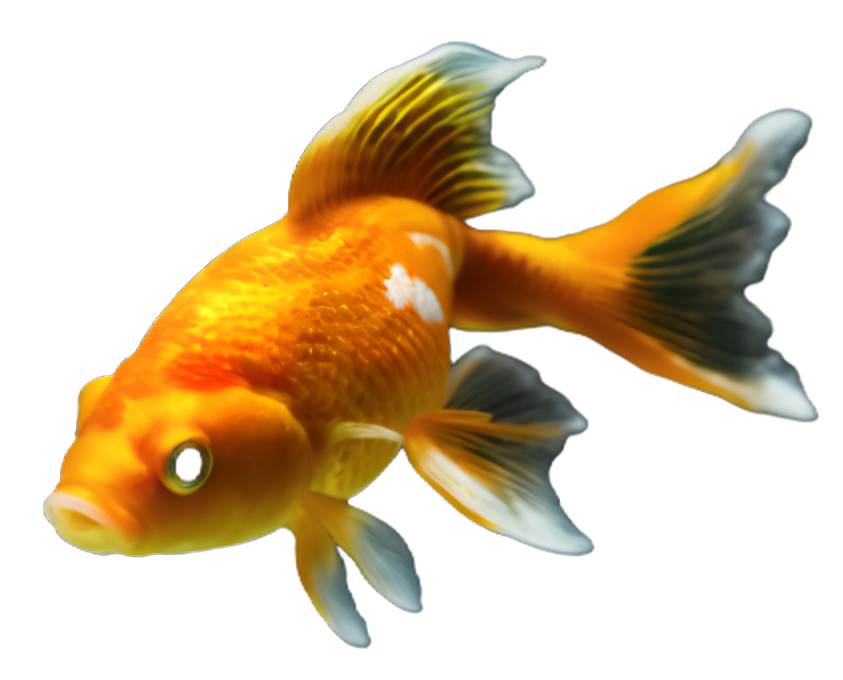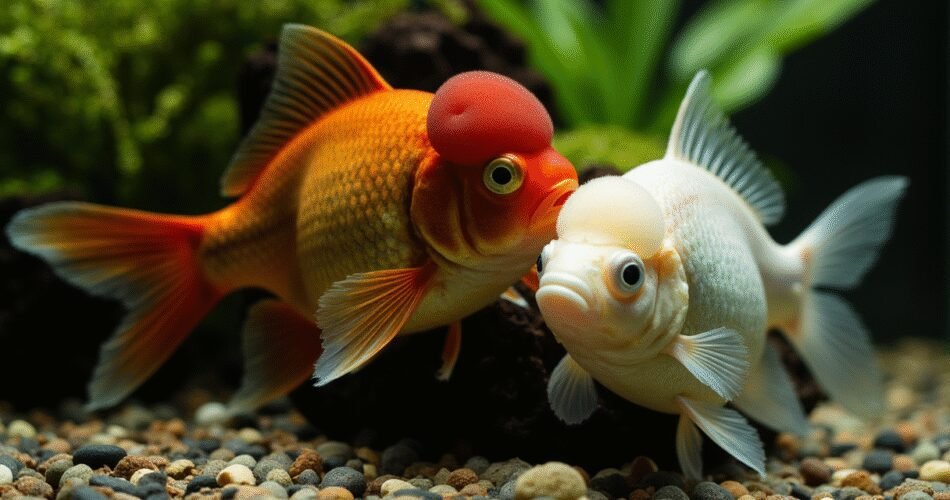Introduction to Breeding Ranchu Goldfish at Home 🐠
I’ve always been fascinated by Ranchu goldfish—their charming, round bodies, lack of a dorsal fin, and friendly personalities make them a standout in any aquarium. If you’re like me and drawn to their unique look, you might be curious about breeding these beauties yourself. That’s where home breeding Ranchu comes in—it’s a deeply rewarding experience that lets me witness the full life cycle of these captivating fish up close.
Starting with the basics of Ranchu goldfish breeding at home isn’t as intimidating as it might seem. With some patience and the right setup, I can nurture eggs into lively fry and watch them grow into healthy adults. For me, the joy comes from seeing new life thrive under my care and knowing I’m helping preserve such a special breed. This introduction to breeding Ranchu goldfish is my first step into a hobby that’s both fulfilling and endlessly interesting.
Understanding Ranchu Goldfish Characteristics 🧠
I’ve found that when it comes to breeding Ranchu goldfish, their unique physical and behavioral traits really stand out. First, let’s talk about their appearance. Ranchu goldfish features include a rounded, egg-shaped body, a prominent head growth or “wen,” and no dorsal fin. These physical traits of Ranchu goldfish for breeding are crucial—I look for a deep body, a broad back, and a well-developed wen for the best breeding stock.
Behaviorally, they’re calm and sociable but can be slow swimmers due to their body shape. I always watch for active, healthy fish with strong appetites, as these behavioral cues indicate good breeding condition. Understanding these Ranchu goldfish characteristics helps me select pairs that produce robust, high-quality offspring.
Setting Up the Ideal Breeding Environment 🏡
When I set up a breeding tank for my Ranchu goldfish, I focus on creating a space that’s both safe and stimulating. I start with a 20–30 gallon tank, which gives the fish enough room to breed comfortably. I make sure it’s equipped with a gentle sponge filter to keep the water clean without creating strong currents. I add fine-leaved plants or spawning mops where the eggs can attach securely. For the substrate, I go bare-bottom—it’s easier to clean and monitor the eggs.
The environmental conditions for Ranchu goldfish breeding are crucial. I maintain the water temperature between 68–74°F and ensure the pH stays around 7.0. I use a heater and thermometer to keep things stable. Before introducing my breeding pair, I condition them with high-protein foods. Once they’re ready, I simulate spring conditions by slightly raising the temperature and performing partial water changes. This encourages spawning and sets the stage for a successful breeding experience.
Selecting Healthy Breeding Stock 🔍
When I choose healthy Ranchu goldfish for breeding, I focus on traits that promise strong, vibrant offspring. For both males and females, I look for active, alert fish with clear eyes, smooth scales, and no signs of disease. Good body shape is non-negotiable—I prefer a stout, rounded body with a well-developed hump on the head and a balanced, double tail.
For females, I select those with a fuller, softer abdomen, indicating they’re egg-ready. Males should show breeding tubercles—small white bumps on their gill plates and pectoral fins—and exhibit chasing behavior. By prioritizing these qualities, I ensure my breeding stock is primed for success, producing hardy, beautiful Ranchu goldfish every time.
Preparing Ranchu Goldfish for Spawning 🍽️
When I’m conditioning Ranchu goldfish for breeding, I start with their diet and water quality. I feed them high-protein foods like bloodworms, brine shrimp, and daphnia twice daily to boost their energy and readiness for spawning. I also make sure their tank water is pristine—regular partial water changes and stable temperatures between 72–78°F are non-negotiable. This pre-breeding care for Ranchu goldfish ensures they’re in peak health before introducing them to the breeding tank.
I keep a close eye on their overall condition, watching for signs of vigor and checking that both males and females are developing properly. A gradual increase in feeding and optimal water parameters are my go-to strategies for conditioning Ranchu goldfish for breeding. Healthy, well-fed fish are far more likely to spawn successfully, so I never skip these steps.
Breeding Behavior and Spawning Process 🔄
I’ve found that breeding Ranchu goldfish at home starts with understanding their breeding behavior. When they’re ready to spawn, I notice males chasing females relentlessly, nudging their sides and vent area. This is a sure sign the Ranchu goldfish spawning process is beginning.
The actual spawning usually happens early in the morning. Females release eggs onto plants or spawning mops, and males follow to fertilize them. After that, I immediately remove the adults to protect the eggs. Keeping a close eye on the breeding habits of Ranchu goldfish at home has taught me that timing and a stress-free environment are key to successful Ranchu goldfish spawning.
Egg Care and Incubation 🥚
Right after spawning, I immediately separate the Ranchu goldfish eggs from the adults to prevent them from being eaten. I gently transfer the eggs to a dedicated hatching tank with clean, aged water and add a mild antifungal treatment to protect against fungus.
For successful incubation, I keep the water well-oxygenated with a gentle air stone and maintain a stable temperature around 70–75°F. I check daily for any white, fuzzy eggs—these are infertile or infected, and I remove them promptly to keep the environment safe.
I keep the tank dimly lit and avoid disturbing the eggs. Within 4–7 days, I start to see tiny fry emerging. Once they hatch, I leave them in the tank until they’re free-swimming before offering their first food. Consistent monitoring and gentle care are key to raising healthy Ranchu goldfish from eggs.
Raising Ranchu Goldfish Fry 👶
When I raise Ranchu goldfish fry at home, my first focus is on feeding. I start with infusoria or liquid fry food for the first few days, then switch to freshly hatched brine shrimp. I feed small amounts multiple times a day to keep their tiny bellies full without fouling the water.
For tank conditions, I keep the fry in a separate, shallow tank with gentle filtration—a sponge filter works best to avoid sucking them in. I maintain pristine water with daily partial water changes and keep the temperature steady around 75–78°F. Good water quality is non-negotiable for healthy development.
General care involves monitoring growth and behavior closely. I watch for any signs of illness or stress and remove any weak or deformed fry early on. As they grow, I gradually introduce larger foods and more space. Consistency and attention to detail make all the difference in successfully raising robust Ranchu goldfish fry.
Common Challenges and How to Overcome Them ⚠️
If I’m facing breeding challenges with my Ranchu goldfish, I know I’m not alone. I’ve dealt with plenty of Ranchu goldfish problems myself—it’s all part of the journey. One of the most common issues breeding Ranchu goldfish is poor water quality stressing the fish and lowering breeding success. I solve this by testing and adjusting pH and ammonia weekly, and doing small, frequent water changes.
Another headache? Eggs getting fungus. I quickly learned to remove any white, fuzzy eggs immediately to protect the healthy ones. And if I’m struggling with weak fry survival, I try feeding freshly hatched brine shrimp—it’s packed with nutrients and really boosts their growth.
These are just a few Ranchu breeding problems, but with patience and these fixes, I see better results in no time.
Conclusion and Tips for Successful Ranchu Goldfish Breeding ✅
I’ve found that successful Ranchu breeding starts with patience and a well-maintained setup. I make sure my breeding tank is spacious, clean, and cycled, with stable water parameters. Feeding a high-quality, varied diet keeps my breeders healthy and encourages spawning. After eggs are laid, I always separate the adults to protect the fry. I keep a close eye on water quality and temperature, and offer tiny, nutritious foods like baby brine shrimp as the fry grow.
For final tips for breeding Ranchu goldfish at home, I focus on consistency—regular water changes and observation are key. I don’t rush the process; I let nature take its course while I provide the best care possible. This summary of the Ranchu breeding process highlights that dedication and attention to detail truly pay off.

